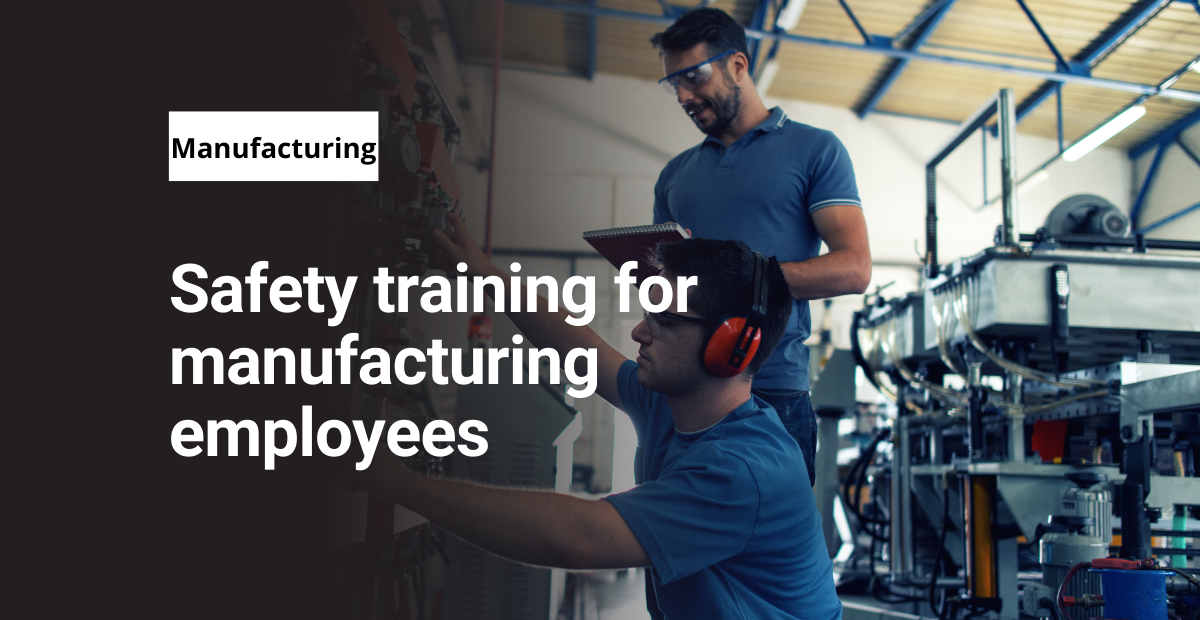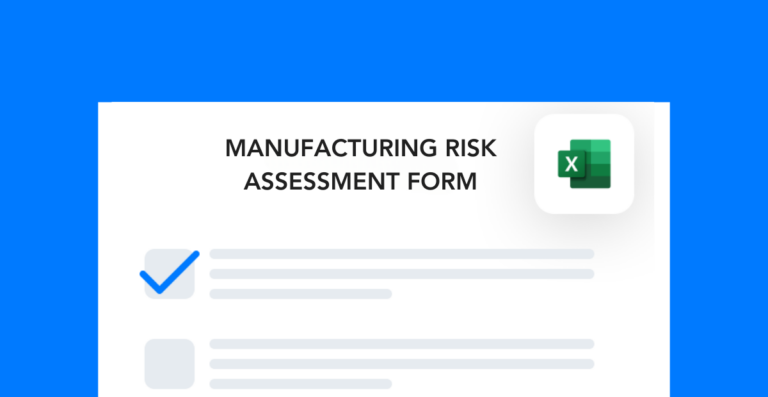The appropriate safety training for manufacturing employees depends on each person’s job function. While there are some topics that all employees should have, there are many others that aren’t universal.
You can categorize most courses as either basic, intermediate, or advanced. At the basic level, topics apply to all job functions and generally take less time per course to administer. As you work into more advanced topics, however, you’ll likely have smaller cohorts and longer training sessions.
In this post, we’ve outlined some of the courses that apply to each of these levels. It’s up to you to determine which courses are essential and which ones you will teach sparingly.
Basic safety topics
Basic training includes those topics that every worker, regardless of industry, should complete. Here are some examples of classes you should consider:
- PPE (eye protection, hearing protection, respirators, etc.)
- Slips, trips, and falls
- Lockout/tagout
- Industrial ergonomics
- Situational awareness
- Fire protection/detection systems
- Emergency action plans
Even employees who only perform work in the offices of an industrial facility need to understand the required PPE in their facility and how to identify when a machine is locked and tagged out. Employees should also understand how vital situational awareness is while on the facility floor to help to prevent incidents, such as fires and slip hazards.
Knowledge of proper ergonomics practices can also benefit all employees at the facility. Both office and operators must understand the dangers associated with repetitive tasks and heavy lifting tasks.
Lastly, all employees must be aware of the facility’s emergency action plan. It is even more crucial for awareness of the facility’s emergency action plan if the facility utilizes process safety management plans for hazardous or highly hazardous chemicals.
Employees should know what constitutes an emergency, what the emergency signals/signs are, and where to go in the event of an evacuation.
In addition to the basic safety training outlined above, new employees should also be educated on essential emergency locations within the facility.
These could include emergency exits, spill kits, eyewash stations, fire extinguishers, AEDs or other lifesaving devices, and first aid kits.
In addition, all employees should know emergency numbers for security, medical, or spill emergencies, and first responders.
Intermediate training topics
At the intermediate level, you have topics for more specific processes. These are the classes that pertain more specifically to individual job functions. So, not all manufacturing employees will need these training courses to stay safe.
- Electrical safety
- Hand and power tools
- Hazardous chemicals/materials
- Hazard communication
- Safety and accident prevention signs/tags
- Heat/cold stress
- Bloodborne pathogens
- Machine guarding
- Struck by/caught in/caught-between
After employees learn the basics, employees working on the manufacturing floor may need additional training to maintain a safe working environment. For example, many workers may benefit from training outlining how to determine the types of hazardous chemicals or materials used in their facility, as well as hazard communication procedures.
More in-depth knowledge of machine guarding and what should be protected can also be beneficial so that workers understand how guards and other controls should be applied to machinery.
In addition, bloodborne pathogen training may be needed as part of first-aid or first responder training. Most of the other items on this intermediate list, except for struck by/caught-in/caught-between training, would mainly apply to maintenance workers in the facility who regularly work with power tools, electricity and may be exposed to extremely hot or cold environments.
However, struck by/caught-in/caught-between training can also benefit all employees, especially those that work in a warehouse with moving vehicles such as forklifts or machinery with many moving parts.
Advanced manufacturing training topics
Advanced safety training for manufacturing employees covers specialized, niche topics. These are likely to be your smallest and most time-consuming courses to administer.
- Ionizing and nonionizing radiation
- Fall protection
- Welding
- Arc flash
- Combustible dust
- Asbestos
- Chromium (VI)
- Permit required confined spaces
- DOT markings, placards, and labels
- EPCRA: Tier I/Tier II, Toxic Release Inventory
Advanced or specialized training targets employees who either need to be educated due to specific and severe hazards associated with their jobs or employees who need a deeper understanding of rules and regulations applying to their work. Work involving risks related to welding, confined spaces, arc flash, or fall protection requires extensive training to do the job safely.
Hazards such as radiation, asbestos, and combustible dust may not be present in every facility but can still be dangerous and require specialized training for warning signs and symptoms or extra precautions that may need to be taken.
If employees at the facility work with shipping and receiving chemicals and hazardous waste, knowledge of Department of Transportation (DOT) rules and regulations and additional requirements may be necessary to ensure the facility is compliant.
In addition, knowledge of The Emergency Planning and Community Right-to-Know Act (EPCRA) and the reporting and community notification under EPCRA laws could also be beneficial. For example, this would allow workers to know whom to notify when a large spill or release occurs or why the facility may be required to disclose information on the chemicals and materials it uses.
Overall, all safety training for manufacturing employees should cover the hazards present in their respective jobs. To maximize the benefits of training, the hazards of each job position should be evaluated, and training should be assigned to correspond with the hazards.
Other posts you might like…
No posts

